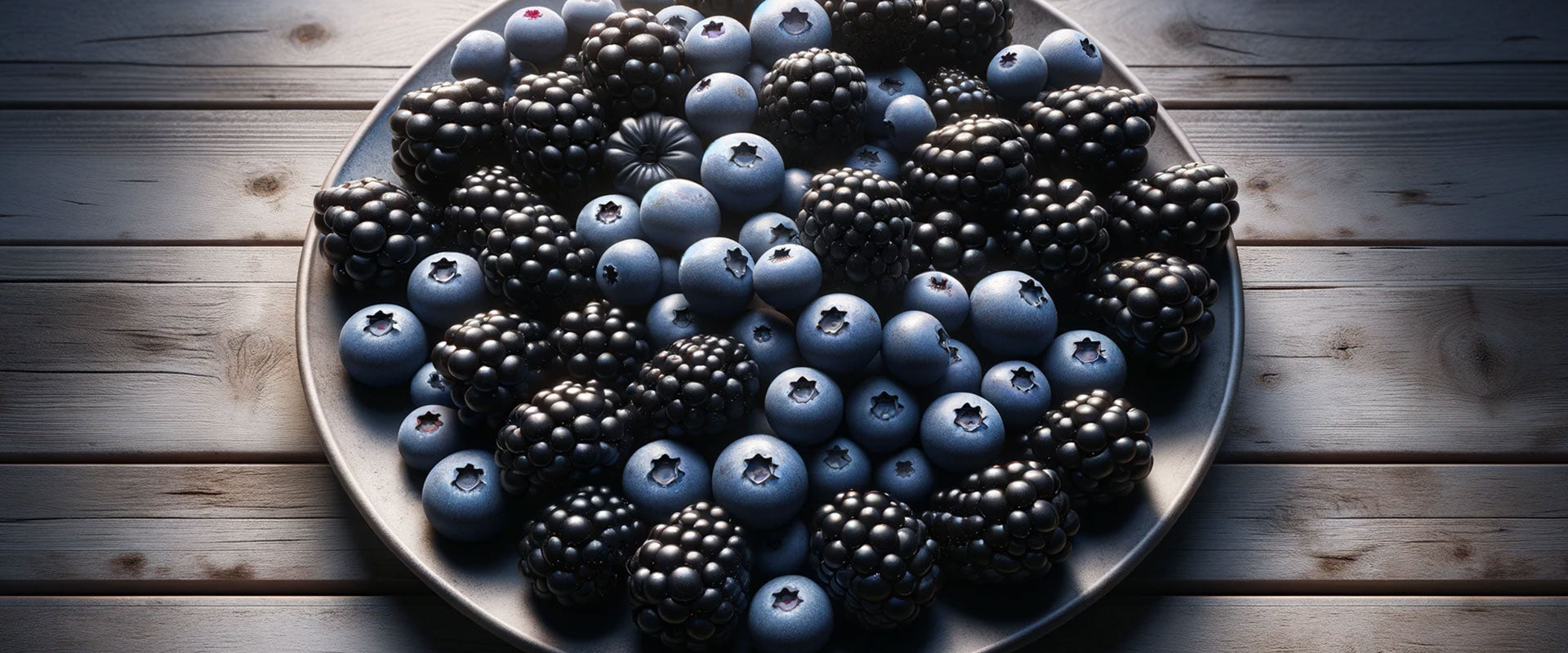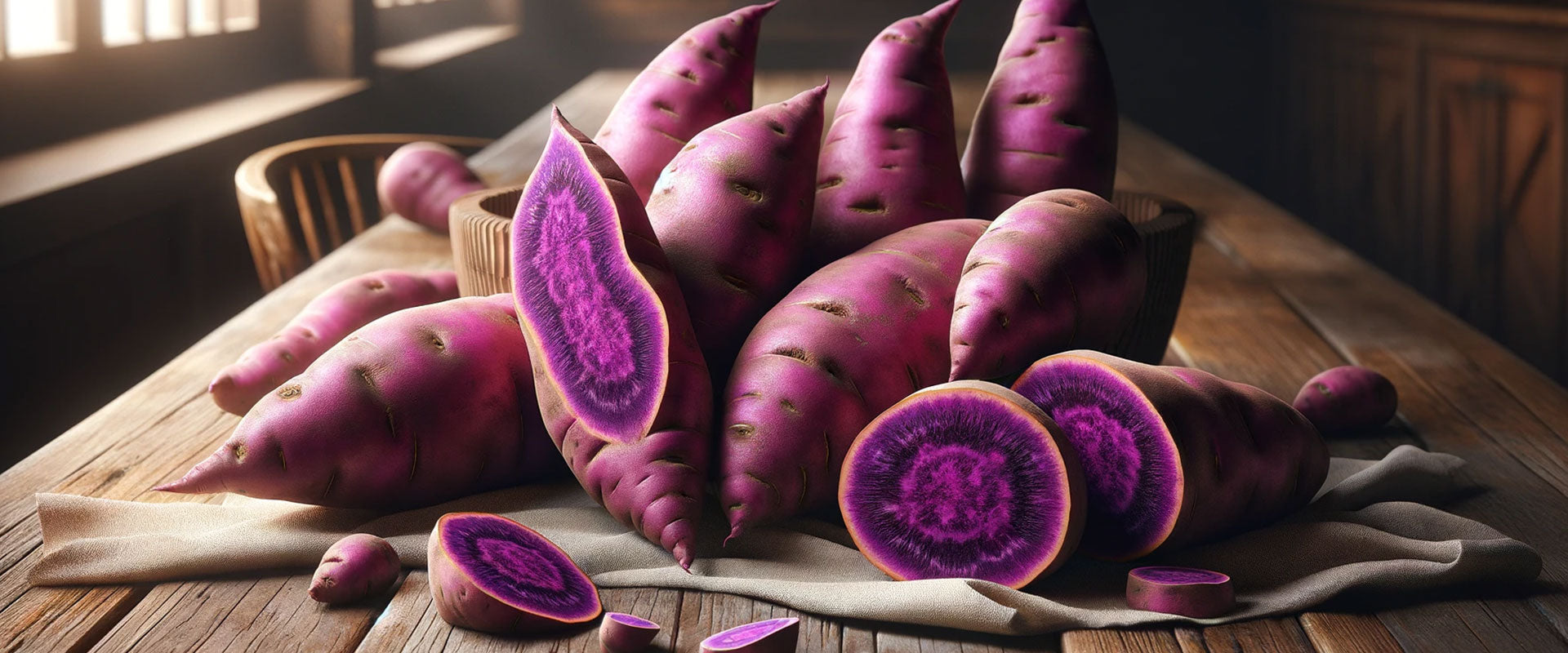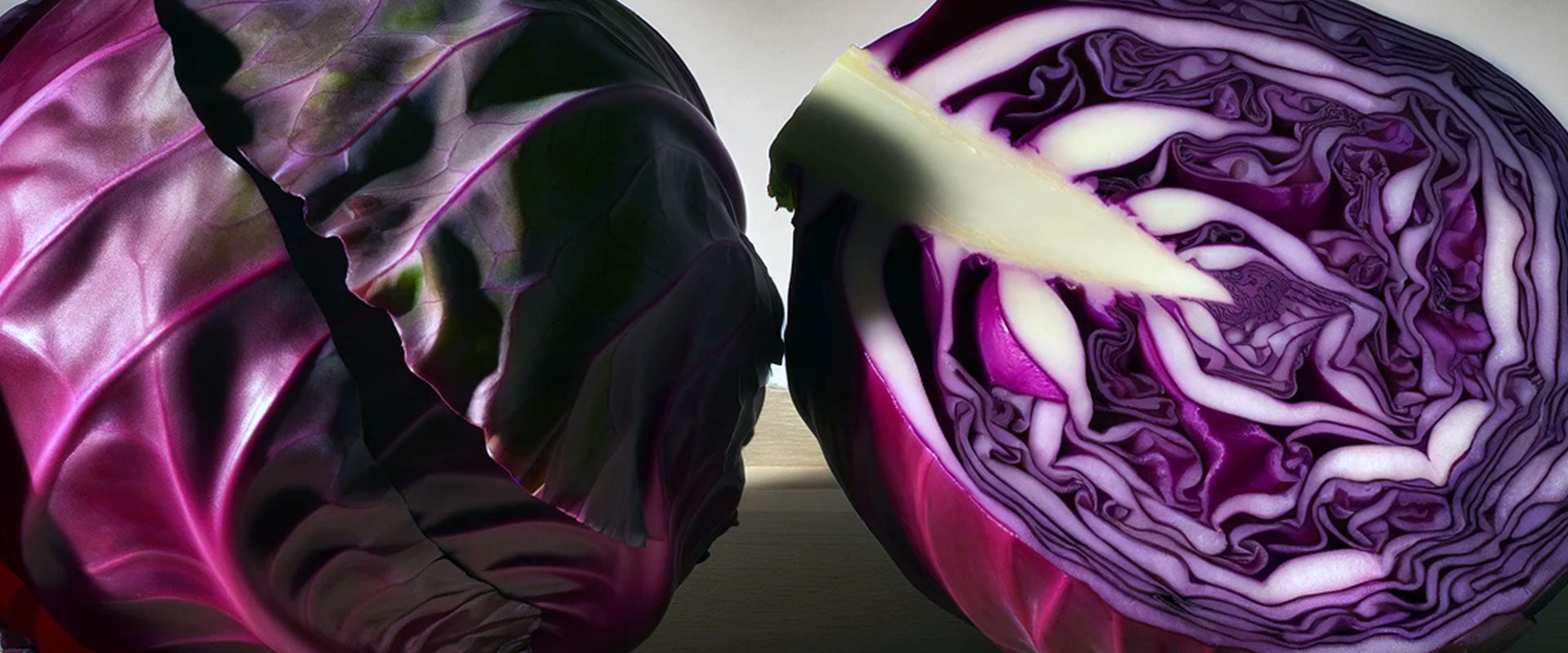Natural Purple Food Coloring and Dye Recipe
Natural purple food dyes, sourced from berries, sweet potatoes, or red cabbage, can provide the vibrant colors you want in your food without the potential side effects of artificial purple food coloring and dyes. They align with sustainable practices and contribute to a healthier and more vibrant food industry.
Blackberries and Blueberries
These berries are a powerful source of anthocyanins, a type of flavonoid that imparts vibrant purple color. They can be juiced and reduced to concentrate the color.

Recipe: Organic Purple Food Coloring from Blueberries
Ingredients:
- Cup of fresh organic blueberries.
- 1 Cup (8 fl oz, 200ml) USDA Certified Organic 200 Proof Food Grade Ethanol.
Steps:
- Wash the blueberries well, remove any stems or leaves. Allow to dry,
- Combine whole blueberries with 200 proof alcohol. Let sit overnight at room temperature.
- Strain the whole blueberries the next day. Because of their high juice content and water-ballon-like consistency, it is not recommended to leave the blue berries in the alcohol indefinitely.
Notes: Color is delicate and can change over time thanks to oxidation. Use your organic natural food coloring as soon as possible for maximum color transfer into your favorite recipes.
Other Ingredients for Making Natural Purple Food Color
If fresh blueberries are not available to you, try these other ingredients capable of delivering a natural purple food coloring or dye when soaked using the recipe described above in 200 proof food grade alcohol. Start with a 1 to 1 ratio of ingredient to alcohol and adjust the recipe to achieve your desired level of natural purple color.
Purple Sweet Potatoes
These tubers contain high concentrations of anthocyanins and have been used in many traditional cuisines as a natural food colorant.

Red Cabbage
This is another rich source of anthocyanins. By adjusting the pH, you can get colors ranging from pink to blue to deep purple.

Alcohol vs. Water for Purple Color Extraction
-
Efficiency of Extraction:
- Alcohol: Alcohol is a more efficient solvent for extracting purple color from many sources (like fruits, vegetables, and spices) because it can dissolve both water-soluble and oil-soluble compounds. This means you can extract a wider range of pigments more effectively.
- Water: Water can only dissolve water-soluble compounds, which may limit the range of colors you can extract.
-
Intensity and Stability of Color:
- Alcohol: The colors extracted with alcohol tend to be more concentrated and vibrant. Alcohol’s lower boiling point means it evaporates quickly, leaving behind the pure purple pigment without dilution.
- Water: Water-based extracts might be less intense and can introduce additional water into your recipes, potentially affecting the texture and consistency of the final product.
-
Preservation and Shelf Life:
- Alcohol: Alcohol has natural preservative properties that can help extend the shelf life of your homemade purple food coloring by inhibiting the growth of bacteria and mold.
- Water: Water-based extracts may spoil faster and usually require refrigeration. They are more prone to bacterial and mold growth.
-
Application Considerations:
- For baking and dry mixtures, alcohol-based extracts can be preferable because the alcohol evaporates during the baking process, leaving the color without additional moisture.
- For cold applications like icing, cocktails, or uncooked foods, both alcohol and water-based extracts can be used, but alcohol-based colors may offer more vibrant hues.




